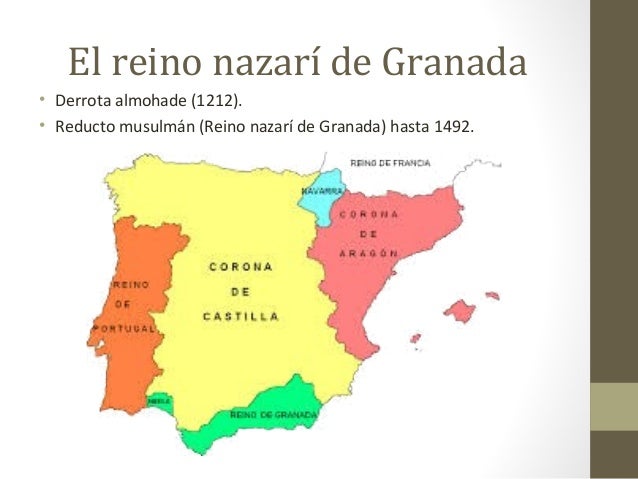The
Kingdom of Granada comprised part of the present provinces of Jaén, Murcia and
Cadiz, and the whole of Almeria, Malaga and Granada, but it was reduced until
in the XV century it encompassed approximately the present provinces of
Granada, Almeria and Malaga. The kingdom was divided into territorial and
administrative districts, called tahas. Likewise, the Nasrid Kingdom suffered
from an important problem of overpopulation.
 The
Nazari capital, Granada, became in the fourteenth and fifteenth centuries one
of the most prosperous cities in a Europe devastated by the crisis of the
fourteenth century. It was a commercial and cultural center of first order that
had about 165,000 inhabitants and of which are very important urban groups such
as the Alhambra and the Generalife. In the Albaicín lived the craftsmen and the
rest of the population occupied the flat part towards the South, with large
industries, customs and madrasa
The
Nazari capital, Granada, became in the fourteenth and fifteenth centuries one
of the most prosperous cities in a Europe devastated by the crisis of the
fourteenth century. It was a commercial and cultural center of first order that
had about 165,000 inhabitants and of which are very important urban groups such
as the Alhambra and the Generalife. In the Albaicín lived the craftsmen and the
rest of the population occupied the flat part towards the South, with large
industries, customs and madrasa
When
Muhammad ibn Nasr, the first Nasrid king, consolidated the dominions of the
Kingdom of Granada, he established the basic scheme of what would be the
kingdom's army. In the Nazari Kingdom of Grenada the noble estate was formed by
two groups: the autochthonous and the foreign. The native was formed the old
landowners, who had great possessions and extensive dominions; They lived
comfortably, sometimes even with luxury. The foreigner was composed of the
noble families who had been forced to emigrate from the territories occupied by
the Christians; Its members were forced to seek employment in court and evil
when they did not reach it. Ibn al-Ahmar enlisted the outsiders in the army of
Granada; For that reason it was initially formed by two militia corps: a
permanent and salaried one, formed by the nobles and captained by the king, and
another, the Muttavia, of temporary mercenaries recruited for a certain company
and in which the warriors of Any social condition.
Marina
From
1264, the first volunteers led by the brothers Abu Tabit Amir ibn Idris and Abu
al-Muarrif Muhammad arrived from Tremecén to the Nazarite kingdom, so another
regular militia formed by volunteer Berbers and Moroccan exiles is organized.
In addition to these bodies, the Nazarite kings, recalling the custom of the
Cordovan Omeyas and the Taifas kings of the eleventh century, entrust their
personal guard to a special body formed only by Christians, Castilians mostly,
exiled or fled their land, sometimes Captives, Islamized or elche.
The
Nazarí war fleet had its main base in the port of Almeria. Nevertheless, the
fleet was weak, little imposing and was used more in the piracy by the coast of
the Crown of Aragon than in open warfare. The inhabitants of the Nasrid kingdom
were little fond of the navy, according to Ibn Khaldun, of whom he says that
they were "strangers in the sea." The Nazarite army was forced to
enlist mercenaries, daring almogávares and adventurers of the sea, whose ideal
was piracy. In the most brilliant period of the Granada navy, in the fourteenth
century, two prominent Almerians stood out: the qaid Abu-l-Hasan and his
nephew, Abu Abd Allah Ibn Salvator.






